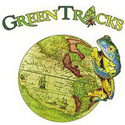Sani Lodge Pt.5 – The Amphibians!
At home I find myself drawn to frogs more frequently than snakes – well I should say when it comes to reading and studying about them. In the field though, snakes are what pushes me. I tell people that snakes are much harder to find or catch so the frogs get nabbed as simple by-catch. Not to dismiss catching frogs as easy or inconsequential. It’s just that’s there is more of them – by numbers and species. My drive for snakes in the field could also be because the frogs are smaller and more fragile. I try to keep the handling of them to a minimum. But snakes I can hold, look at closely, and marvel live at the patterns, biology, and existence. It is not until I get home and look at my frog photos that I get to be really wowed. Unfortunately, it is on the screen that I get to marvel at the details and patterns of skin and eyes. This is not to say I can’t appreciate their lives in the field. When I am belly down in the forest photographing these little things I can’t help but be amazed how they even survive. When you see an ant or spider come waltzing by twice the size of the frog or see dirt clumps stuck to them the equivalent of boulders you can appreciate the rough lives they live. And yet they don’t know it. They just go about doing their froggy things.
People always ask me when do I go out hunting for these animals. I tell them morning, afternoon, and night. Unlike birders that, for the most part, have a few early morning hours of peak activity, herpers can spend all day and night looking for stuff. That is because some snakes are crepuscular (active at dawn or dusk), some are active heliotherms (sun lovers) that hunt lizards during the bright of day, and many more that you will either see cruising around at night or coiled up in vegetation sleeping. While most frogs are nocturnal there are quite a few that are out during the day too. The dart-poison frogs are diurnal. And many leaf litter frogs, while they prefer nighttime activities, can be disturbed to hop about during the day. Frogs are found by sight and sometimes sound. I mentioned the difficulty in tracking glass frogs by sound in a previous entry. Frog calls will often get you to a region where they are but most are very motion aware and shut up well within approach. The high-pitched reflected calls off vegetation means that even chasing a frog by sound is going to be work. You know it’s ‘there’ but exactly where is the problem. On this last trip I noted about half a dozen frog calls from high up in the treetops. No chance to get them. Here is a chance where I get to brag. I have found that I seem to be very good at spotting frogs, especially in forests. Where most people can be a foot away and still not see them, I have found myself spotting teeny frogs camouflaged from 5-10 meters away. This is not to say I see them all (far from it) but I have developed an eye to see them. I have spent in total over a year and a half hiking around tropical forests and some nights it seems like all the animals just pop out at me.
Over this time I have accumulated a pretty decent life list of western Amazonian frogs seen. Which means that it is getting harder to see a species new to me. On this trip I saw about 30 species of amphibians. Of these 2 were new to me (I am pretty weak in identifying Brachycephalids and have yet to find a good source in separating out Osteocephalus). This does take some off the pressure to get THE shots and means that many of the animals are just left alone as I make my way around – freeing me to spend my photo efforts on other subjects.
I did note some interesting distributions. Oreobates quixensis is a frog I almost get a couple of per trip but this time it was by far the most frequent frog seen. Every night I could spook up more than a dozen – from little guys to full size adults.







4 comments
Another great post, Tim! Thanks for sharing your experiences and your awesome photos!
Oh, great picture! That’s a cool little frog. I’ve always wanted to go to South America and look for dart frogs. Just to see them in their natural environment!
Great looking trip. I want to field herp in south America sometime. Wish I had somebody who loved them as much as me to go with!
The dart frog community is pretty close-knit. Dive in and you’ll find someone to take a trip with you. I’ve been fortunate to see lots of dendrobatid species in the wild (from several countries); many of them exceedingly rare. You do have to put in the work to pull it off but the rewards are worth it. I’ll have to write a dendrobatid hunting article some day.